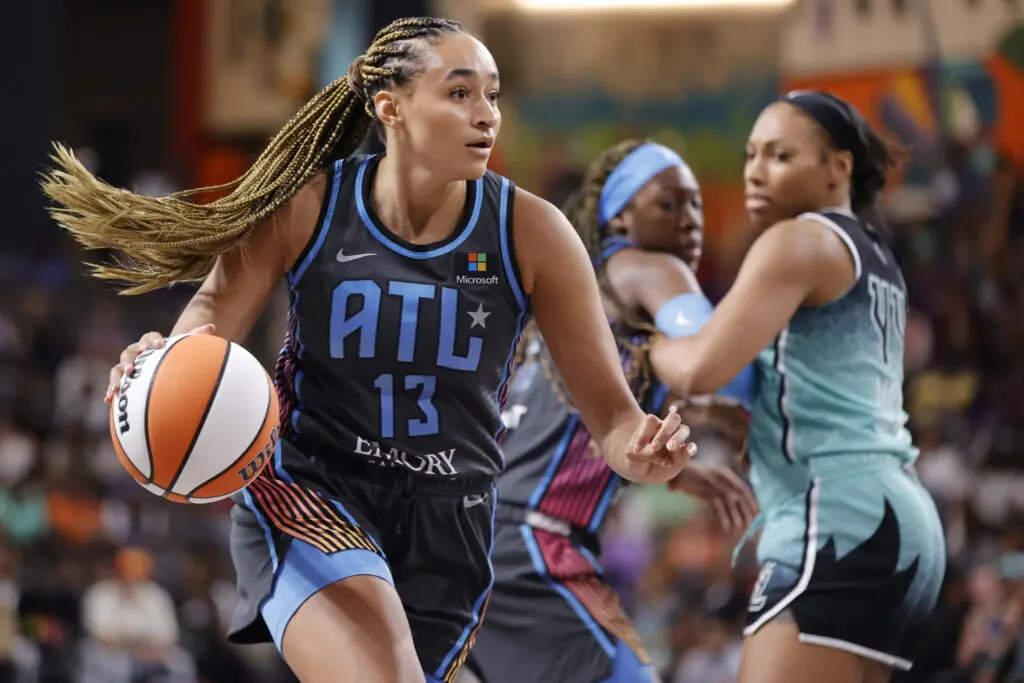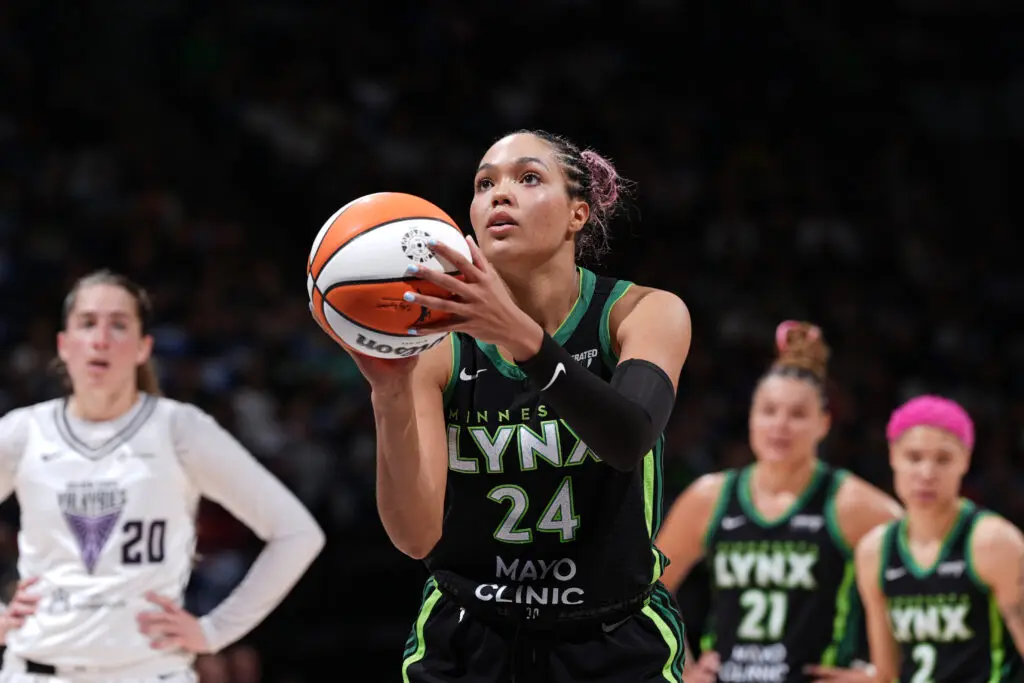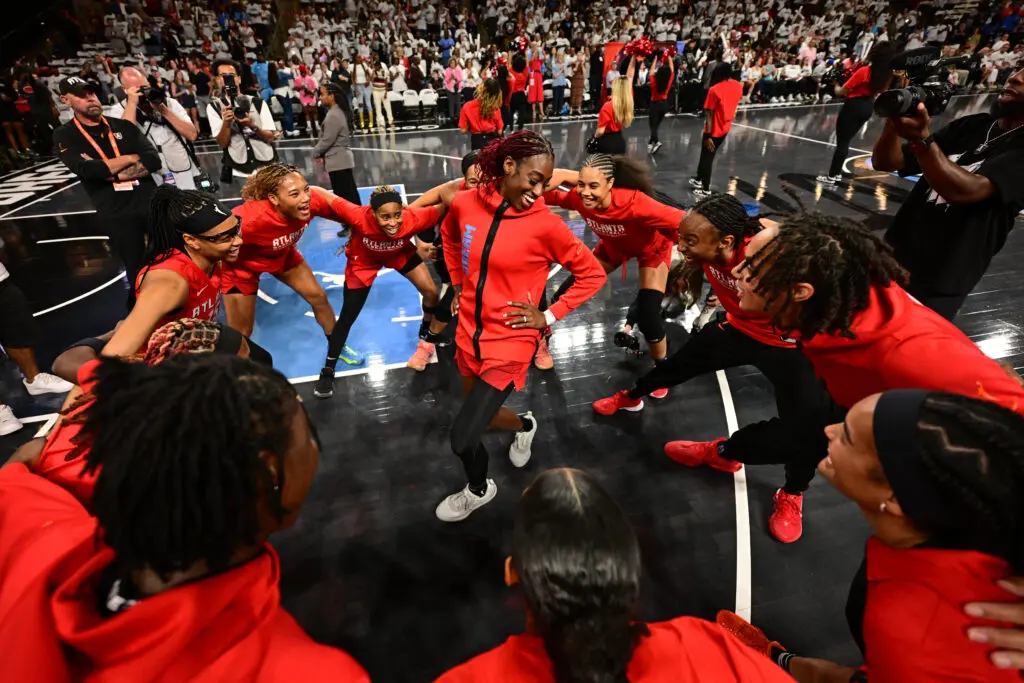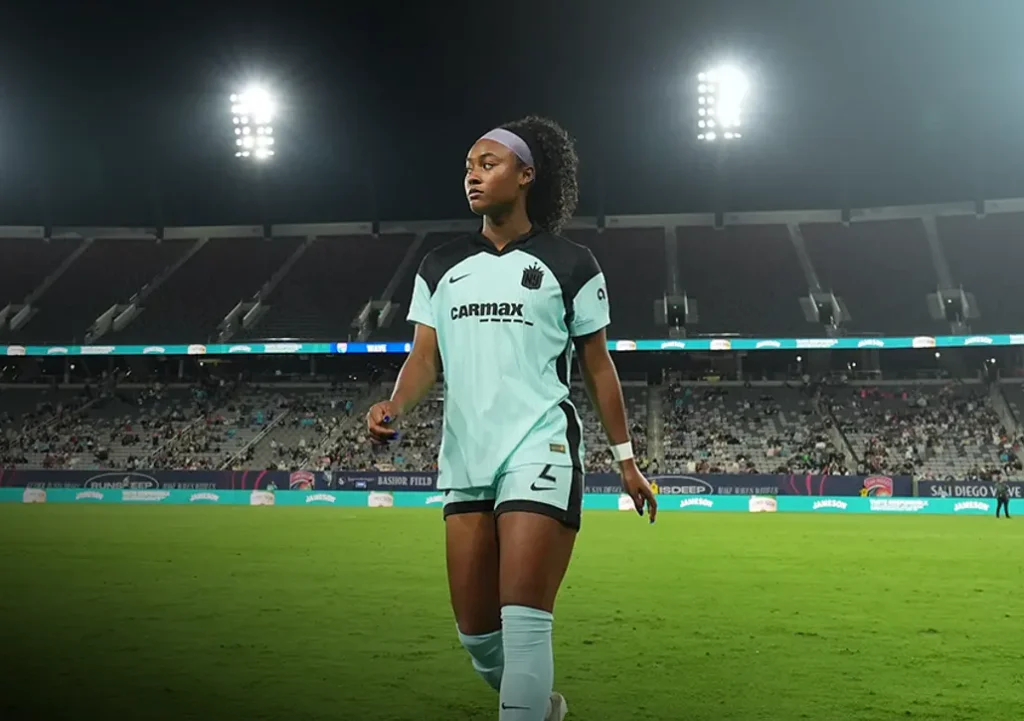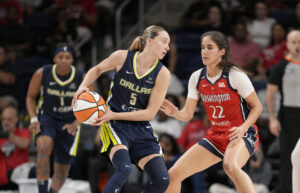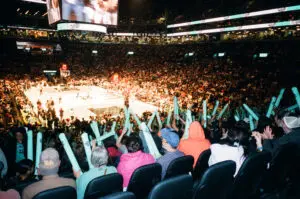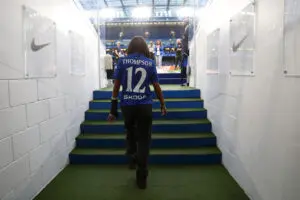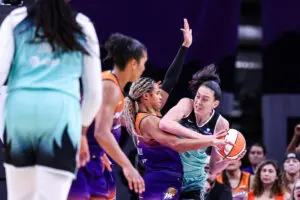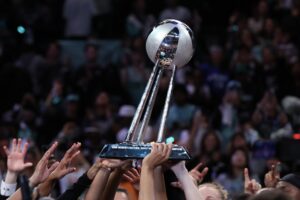No one understands what Caitlin Clark and the 2024 WNBA draft class has ahead of them better than Atlanta Dream guard Haley Jones.
Jones is a product of her own vaunted draft class, selected sixth overall in 2023 upon finishing a college career at Stanford that produced a 2021 national championship. Since joining the WNBA, Jones had steady output as a rookie, playing in all 40 of the team's games in her first season.
The transition wasn't always easy. Jones had to balance finishing her Stanford degree with the early months of her first professional season, competing against seasoned veterans while closing a chapter of her life as a student.
"In college, it's a job-ish. But now it's really your life, right? And not only are you competing for yourself, but the women that you're going against, this is their lives. They have kids to provide for, families, so it's a different mindset when you come in," she told Just Women's Sports at the 2024 Final Four in Cleveland. "They're so smart, they're so efficient. And so you'd be doing the same things, but they get there quicker."
Only one year removed from her own college career, watching the upcoming 2024 draft class maneuver the same schedule has been somewhat surreal for Jones. She says she remains close with many of the players at Stanford, including incoming WNBA rookie Cameron Brink, and with the NCAA tournament now behind them she knows just how quickly their lives are going to change.
"The whirlwind that it is when your season ends, you get like three days if you're going to declare for the draft or not," she says. "Then you figure it out, boom, the draft is next Monday. So no time, it's quick. And then they're gonna [have the] draft on the 15th, training camp starts the 26th or 27th, so you have 11 days to move your life to wherever you're going, figure out the new city, get your car there, do all these different little things that come along with it."
Once players arrive in training camp, their spots in the league are anything but guaranteed. With expansion still on future horizons, this year's draft class will be competing with established veterans (including, now, Jones) for limited roster spots. It's not unheard of for even WNBA lottery picks to struggle in establishing a foothold in one of the most competitive leagues in the world.
"A lot of us get to the point of being in the W, you get there because you're hypercritical," Jones says. "That's why you've been able to be so good, your work ethic is insane. So you're watching everything that you do, you're correcting yourself, you're watching film, you're doing all these things."
"I think my biggest advice is really just like the present and understand that you're there for a reason. I think that there's impostor syndrome sometimes when you get to the league. But you have to understand that there's something about you that makes you special, to be where you are."
The rookie wall is real, Jones says, and her own hypercritical nature got the best of her at times during her first year in the WNBA. But she also feels that once a player can find a sense of rhythm, there's a simplicity to the life of a professional athlete that allows them to further expand their horizons.
Misconceptions about NIL opportunities continuing beyond women's college basketball careers have abounded in recent months, with current WNBA players having to correct the record. Jones is a product of the NIL era, and has only seen her professional opportunities expand since leaving Stanford.
"Most of the deals I had in NIL I'm still with now," she says. "Because those contracts [extended] or they just renewed now that you're in the W."
"Then you take what you were making [in college] and then you add in your W salary, so — thank you. Now I have my 401k system. I have health care, all these different things — so you kind of honestly add on when you get to the W, on top of better competition, all these different things."
Removing schoolwork from her daily schedule has also given Jones more time to pursue other projects, like her podcast "Sometimes I Hoop", in partnership with The Players' Tribune. As the WNBA continues to build its own ability to market and promote its players, Jones has relished the opportunity to not only meet players she admires through the podcast, but add to an increasingly vibrant media landscape following women's sports.
"There's a lot of men's basketball podcasts out there, a lot of player-led ones," she says. "There's not a lot of women's basketball. There's some women's basketball focused pods, but not a lot of player-led ones."
"I think it's great for me to be able to give back to women’s basketball in my own way."
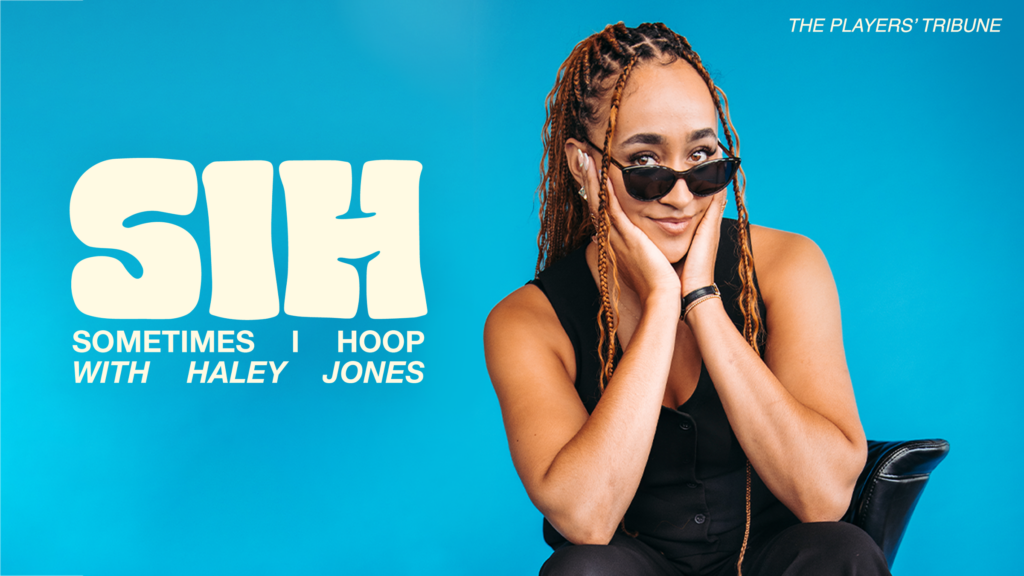
Jones's experience with the podcast has also given her a unique perspective on what possibly comes next for the WNBA, as the league looks to capitalize on a wave of popular young talent while still serving the players already on team rosters.
"Everybody in the league, they were All-Americans at one point in time. They were national champions, like we all have that resume," she says. "I think it's just the W expanding on their storytelling. I think doing a better job with that will do a lot, also like buying into what the players are doing."
She notes the impressive personal brands that players like Clark, Brink, and Angel Reese have built on their own.
"The W has a fan base, but then each individual player has a fan base," she continues. "So by locking into those and making them not only Angel Reese fans, Caitlin Clark fans, Cam Brink fans, making them W fans as well will be big."
As Jones grows into her second year as a professional, her perspective of her own college career has also shifted with time. Winning a national championship is difficult, and Stanford's ability to come out on top in 2021 is an achievement she's appreciated even more in the years since winning the title.
"You don't really realize it until later on," she says. "As I look at it now, I realize how big of an accomplishment that that was."
"Talking to my parents, they're like hey, how many people can actually say they won one?" she continues. "How many people become college athletes? DI athletes? Win a natty? One team a year."
The ambitions for Jones in 2024 are even bigger, with the Dream looking to improve upon their fifth-place finish last season. But she also believes the key to growing the game of basketball can be found in connecting with the community, following in the footsteps of college titans like Dawn Staley at South Carolina.
"People buying into these programs because you see them in the community is huge. I feel like for the W to be continuing to do that, continue with community initiatives, all these different things that we're doing. I think that you'll get a lot bigger fan bases."
